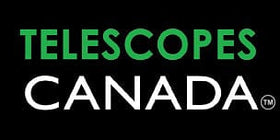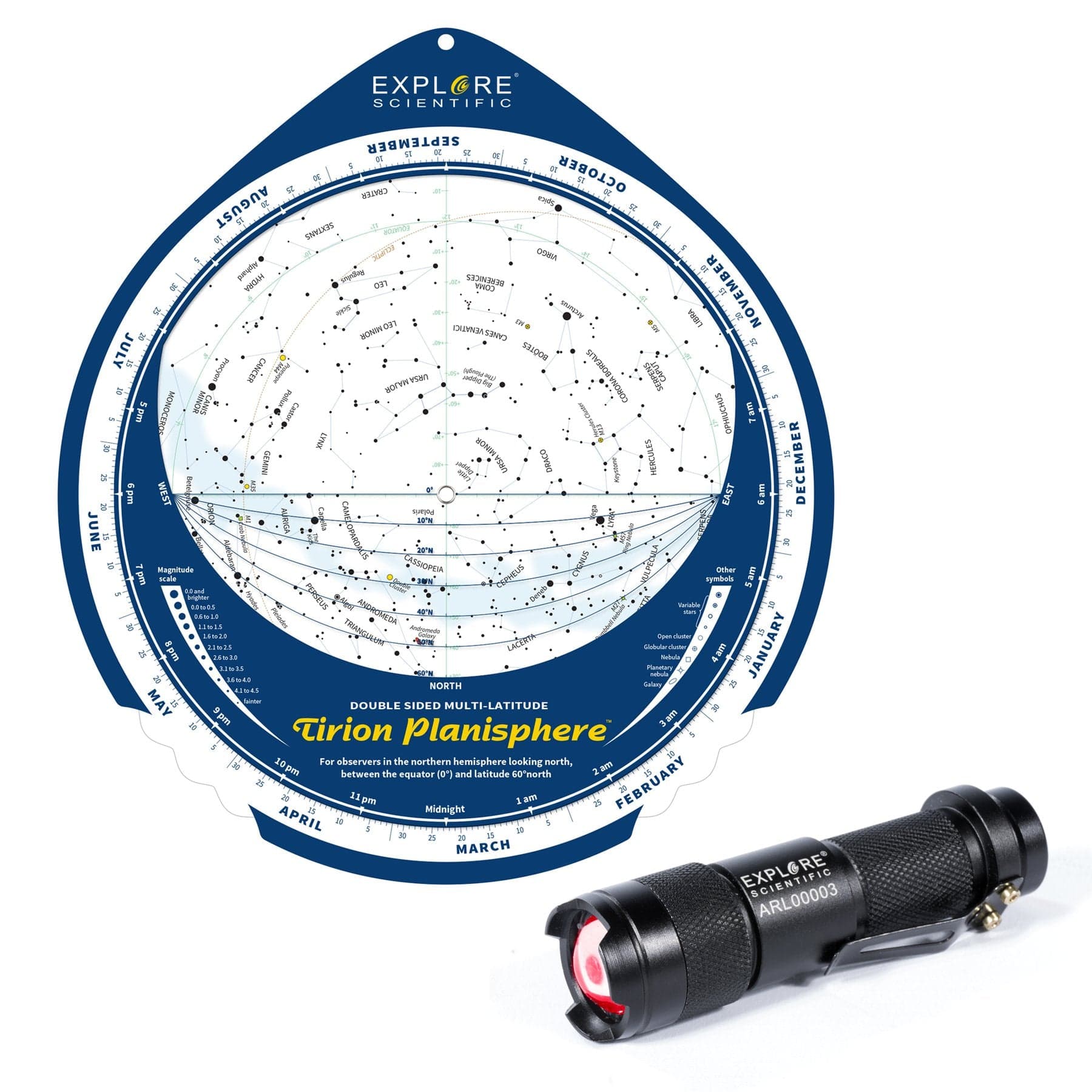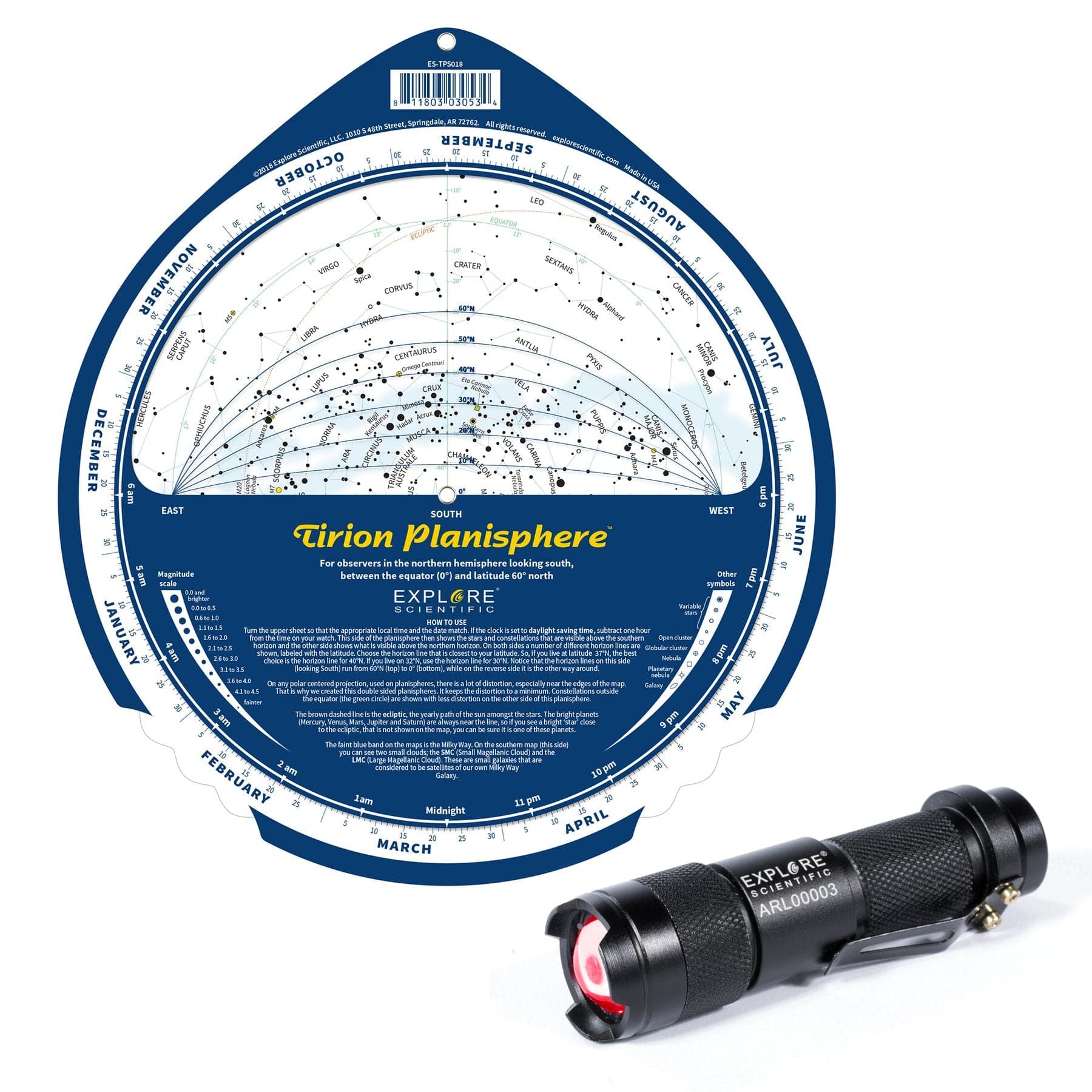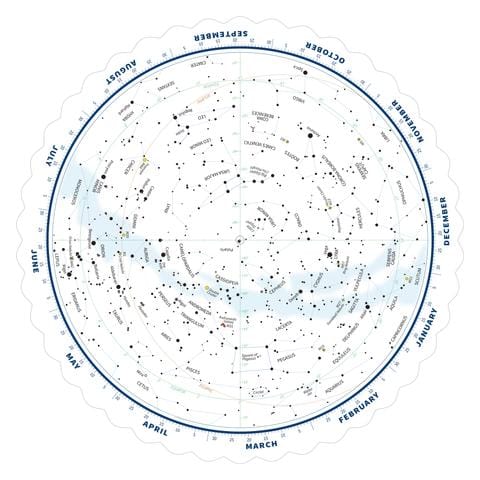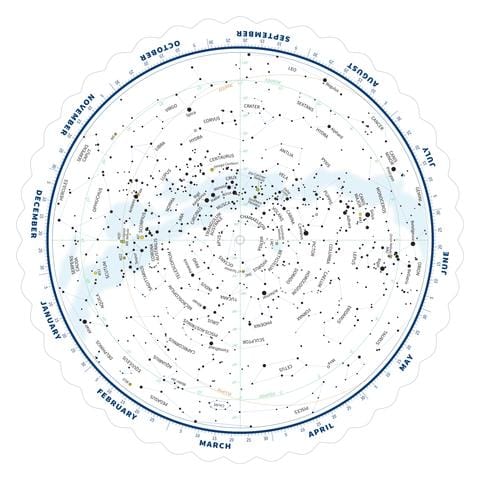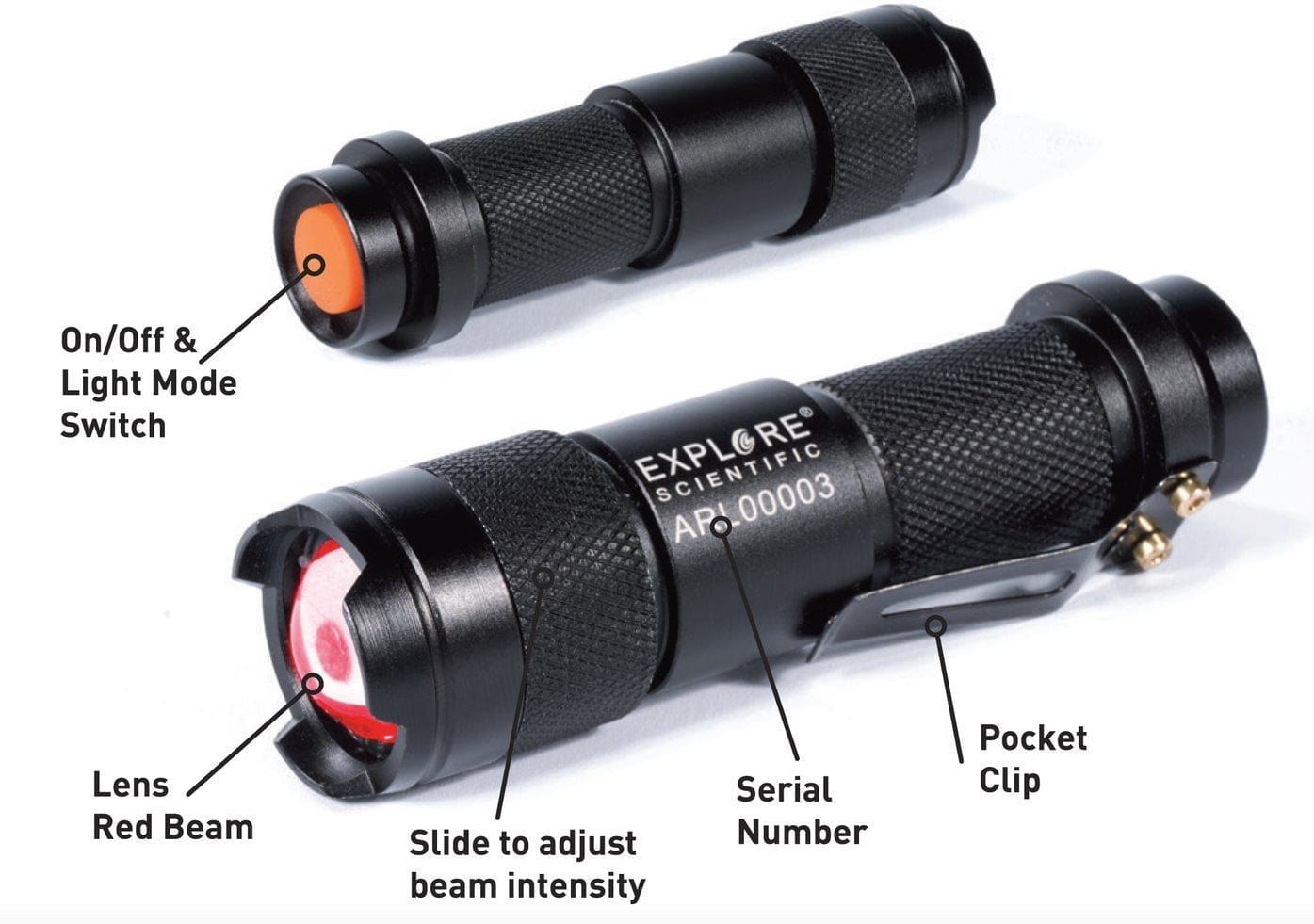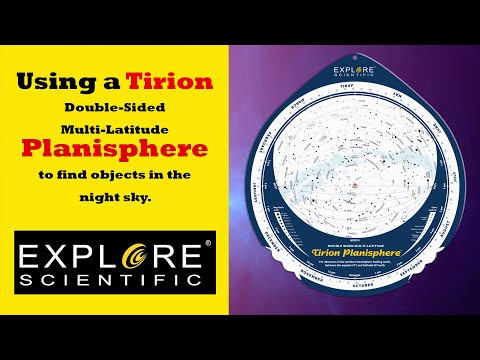Description
The latest Planisphere Creation from Master Celestial Cartographer Wil Tirion
With a universe of options to explore, it can be difficult to track what awe-inspiring treasures are currently visible in your sky. The Tirion double-sided planisphere can help guide your explorations throughout the year. Created by noted celestial cartographer Wil Tirion, this planisphere works over a vast range of Northern hemisphere latitudes (0° to 60° north) and uses a double-sided design to minimize distortion. It is made of durable plastic and the celestial dials are secured with no-corrosion brass rivets.
To use, simply rotate the planisphere's celestial dial to match the current date and time, aim the pointed end up and face north to see which constellations are rising, transiting, and setting. The see-through cover has latitude boundaries from 0 degrees to 60 degrees north in 10 degree increments. Flip the planisphere over to see the positions of stars in the sky when facing south in the Northern hemisphere.
Tirion's celestial symbols indicate star magnitudes from 0.0 and brighter down to 4.5 and fainter, there are also symbols for galaxies, planetary nebula, nebula, globular clusters, open clusters, and variable stars.
On any polar centered star map projection, normally used for planispheres, there is a lot of distortion, especially near the edges of the map. That is why we created this double-sided planisphere to keep the distortion to a minimum. Constellations outside the equator (the green circle) are shown with less distortion on the other side of the Tirion Planisphere.
The brown dashed line is the ecliptic, the yearly path of the sun amongst the stars. The bright planets (Mercury, Venus, Mars, Jupiter and Saturn) are always near the line, so if you see a bright ‘star' close to the ecliptic that is not shown on the map you can be sure it is one of these planets.
The faint blue band on the maps is our own galaxy the Milky Way. On the southern side at the planisphere you can see two small clouds; the SMC (Small Magellanic Cloud) and the LMC (Large Magellanic Cloud). These are small galaxies that are considered to be satellites of our own Milky Way Galaxy.
About Wil Tirion:
Based in The Netherlands, Tirion has been crafting stars maps since the 1970s and became a professional uranographer shortly after the publication of his highly regarded Sky Atlas 2000.0 in 1981.
Astro R-Lite
Perfect for use with the Tirion Double-Sided Planisphere, Explore Scientific's Astro R-Lite is a red beam flashlight designed to specifically meet the needs of amateur astronomers. This versatile device will allow you to read star charts or make equipment changes without disturbing the crucial adjustments your eyes have made to dark conditions.
The Astro R-Lite is the perfect size to be tucked into a pocket and weighs just 2. 7 ounces with the battery installed. It offers a built-in belt/pocket clip and comes with a neck strap for quick access.
The Astro R-Lite offers several lighting modes for versatile performance. The orange button on the end turns the flashlight on and off and changes light modes from high to low to a flashing mode that is ideal for signaling.
Built to perform in changing conditions, the Astro R-Lite has an aluminum body that can withstand accidental drops, heavy rain, snow and brief water submersions.
The Astro R-Lite has a sliding control that quickly changes the beam intensity on the high and low modes to fit rapidly changing lighting needs.
The Astro R-Lite has a highly efficient LED bulb capable of providing hours of continuous red light on a single AA battery. Battery not included.
